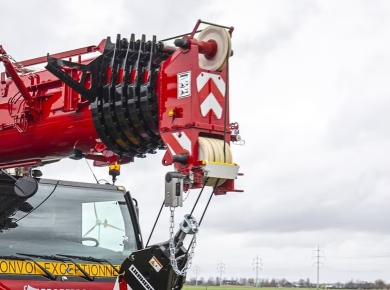When the sparks start flying and the metal begins to melt, it’s easy to get caught up in the moment and forget about the invisible threats lurking in the air. I learned this lesson the hard way after a long day of welding on a construction site. The protective welding hood was my first line of defense, but it didn’t take long to realize that it couldn’t shield me from everything. The air quality around welders can often be just as dangerous as the molten metal, and that’s where a quality welding respirator becomes an essential piece of safety equipment that should never be overlooked.
The Invisible Threats of Welding Fumes
Welding produces a cocktail of fumes and gases that can be hazardous to your health. While the bright arc and the glow of the molten metal are mesmerizing, the byproducts of that process—zinc, chromium, manganese, and more—can pose serious risks. In my early days on the job site, I’d often find myself dismissing the need for a respirator, thinking my hood was enough. However, after attending a safety seminar and hearing firsthand accounts from experienced welders who had faced respiratory issues, I quickly changed my tune.
Welding fumes can lead to short-term symptoms like headaches and dizziness, but prolonged exposure can result in chronic respiratory problems. Understanding the severity of these risks is crucial for anyone working in a welding capacity. A welding respirator is designed to filter out these harmful particles, giving you an additional layer of protection that your hood simply cannot provide.
Types of Welding Respirators
When it comes to choosing the right welding respirator, there are several types available, each designed for specific needs.
Half-Mask Respirators
Half-mask respirators are one of the most common options among welders. They cover the nose and mouth, providing a solid defense against particulates and fumes. I’ve used these in various environments, and they’ve always provided a good balance between protection and comfort. The key is to ensure a proper fit—if the mask doesn’t seal properly, it won’t do its job effectively.
Full-Face Respirators
For welders working in environments with higher concentrations of hazardous materials, a full-face respirator may be necessary. These masks offer complete protection, covering the eyes and face as well, which is especially important when dealing with intense light and heat. In my experience, full-face respirators tend to be more cumbersome, but the trade-off is worth it when safety is the priority.
Compliance and Best Practices
Understanding compliance regulations is crucial for site management and safety officers. OSHA and other governing bodies have established guidelines that dictate when and how respirators should be used in welding operations. Compliance is not just about avoiding fines; it’s about ensuring the health and safety of your team.
As a site supervisor, I’ve always emphasized the importance of regular training sessions that focus on respiratory protection. Educating employees about the proper use and maintenance of respirators can significantly reduce the risk of health issues down the line. Simple practices, like inspecting the respirator before each use, can make a big difference.
Incorporating Respirators into Your Safety Culture
Creating a safety culture on-site means integrating the use of welding respirators into daily practices. Encourage open discussions about safety equipment and create an environment where team members feel comfortable sharing their concerns. The more engaged your team is, the more likely they are to adhere to safety protocols.
In my experience, conducting regular safety audits helps reinforce the importance of using respirators. When team members see their peers consistently wearing respirators, it fosters a sense of responsibility and accountability. This collective mindset can dramatically improve overall safety on the job site.
Real-World Challenges and Solutions
Despite knowing the importance of welding respirators, challenges can arise that make compliance tricky. One of the biggest obstacles I’ve encountered is resistance to wearing respiratory protection due to discomfort or a perceived lack of necessity.
To tackle this, I recommend investing in high-quality respirators that prioritize comfort without sacrificing safety. Many modern respirators come equipped with features like adjustable straps, lightweight materials, and even cooling systems. When workers feel comfortable, they’re more likely to wear the equipment consistently.
Additionally, fostering a strong relationship with manufacturers can help ensure that your team has access to the latest technology in respiratory protection. Staying informed about innovations in the field can lead to better solutions for your team’s unique challenges.
Conclusion: Prioritize Safety Beyond the Hood
As the sparks settle and the welding torch cools, it’s easy to think that the most immediate dangers have passed. However, the reality is that the risks of welding extend far beyond the visible hazards. Investing in a quality welding respirator is not just a best practice; it’s a necessity for maintaining the long-term health of your team.
Embrace a proactive approach to safety by integrating respirators into your daily operations and fostering a culture of safety awareness. The health of your team is invaluable, and by prioritizing respiratory protection, you’re taking a significant step toward ensuring their well-being. Remember, the hood protects against the heat and brightness, but it’s the respirator that shields against the unseen dangers that could affect your team for years to come.


